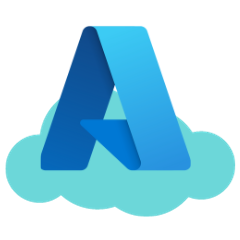ScholarHat’s Job-Oriented Training to Make You Interview-Ready and Industry-Ready
What is ScholarHat?
Kickstart Your Tech Career with ScholarHat’s Job-Oriented Live Training
Our expert-led, project-based programs are designed to make you job-ready fast. Learn from certified mentors, build your portfolio, and unlock your next opportunity with ScholarHat.
No courses found
Try adjusting your search criteria or browse all courses
Learn to Build Real-World Projects
Hands-on, work experience based learning is what makes ScholarHat different from others. Build real world projects by applying your coding skills live with your mentors in just 15 weeks. You'll learn how to start a project from scratch by following recommended architecture, practices and deploy to server.
ScholarHat Live Training Benefits
Discover the advantages of learning with ScholarHat and accelerate your career growth
Unlimited Live Sessions
Live Training Membership gives you unlimited access to your subscribed live training and sessions recording from anywhere, and using any device staying at home.
Expert-led Live Sessions
All sessions are led by our expert mentors who are well connected to the open source communities. They explain complex technical concepts in an easy way.
Quick Notes
Boost your learning confidence with bite-sized notes. Quick notes are bite-sized chunks, to retain crucial knowledge and aid in efficient learning and quick recall.
Hands-on Labs
Learn by doing hands-on to gain confidence to solve real-world challenges and assignments.
Skill Tests
Each Module will be followed by mockup tests and quizzes which help you to monitor your learning progress and evaluate yourself.
Build Real-Projects
All the sessions are delivered using real-life examples. You will learn how to build real projects using industry recommended principles & practices.
Career Coaching
Get career guidance from top experts as your personal coach, align your preparation strategy & learning resources to achieve your goal.
Interview Preparation
Our priority is to prepare you for next job opportunity. We provide comprehensive explanations of each topic, using interview Q&A.
Mock Interviews
Practice mock interviews with experts working in the industry, before facing your job interview.
Discord Support Access
Get access to Discord community to discuss doubts, access assignments and learning with peer interaction.
Resume Building
Optimize your resume with the help of our experienced experts to get your desired jobs.
Get Certified
Master in-demand job skills to become a technology expert, get certified, and accelerate your career.
Unlock Your Coding Potential – Get Free Personalized Career Advice!
Your learning is important. Let's have a Google Meet to get more clarity.
Personalized Learning Path
Get a customized roadmap based on your experience level and career goals to maximize your learning efficiency.
Flexible Scheduling
Book your consultation at a time that works best for you with our flexible scheduling system.
Expert Career Guidance
Connect with industry experts who will provide valuable insights and career advice tailored to your goals.
Our Students Reviews

Nitish Gugnani
Dear Shailendra Sir, this training helped me lot for improving my skills and I also learn so many new technologies. During training, I got hike in my current company. Shailendra Sir doing a great job and he explains every topic briefly, it’s very helpful to clear so many doubts. Yes, I also want to learn new technology in future from Shailendra Sir. Thank you Very Much Sir.

Varun Gupta
It was a great learning experience at ScholarHat. I am totally satisfy with their teaching practices. The trainer's was well informative and tried his level best to trained us. The support staff was also very quick, whenever we need any assistance. All the best ScholarHat

Abhishek Kumar
I really have an amazing experience with ScholarHat. It helps me to explore MVC and other different technologies like Angular 2 & 4, Web API, LINQ and Bootstrap Etc. It's an honor to practice these technologies under the guidelines of Mr. Shailendra Chauhan, who has encouraged our work and motivated us to learn APS.NET MVC. I gained much knowledge from ScholarHat and now I'm flexible enough to work for this technology.









